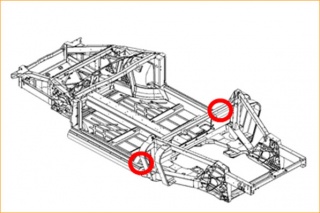High strength cellular aluminium foam for the automotive industry
Aluminium foam is used for applications that requires high level of energy and sound absorption characteristics. Researchers have developed an innovative process to make high strength cellular aluminium foam with help from some salt.
Aluminium foam exhibits unique properties when compared to its dense form, particularly its lightweight characteristics. Generally, the foam can be divided into two categories; closed cell and open cell, both have different characteristics and applications.
The features of the closed cell are, the pores structure is isolated and they are not connected to each other. This type of aluminium foam is suitable for application that requires high level of energy and sound absorption characteristics. It has been used widely in many structural parts, particularly in areas exposed to high damping capacity, for example
in the automotive front bumper component.
Meanwhile, the open cell, owing to greater level of connectivity of the pores, the structure has been accepted and used in thermal management applications. One such promising application is as a heat exchanger, particularly as a cooling medium to transfer heat, due to the development of its porous structure, which provides greater surface area, thus, enabling improved heat transfer efficiency.
Producing a combined structure of open and closed cell in one volume component appears to be a difficult process due to the different processing techniques involved and their individual limitations. Therefore, in this study, an innovative processing route for high strength cellular aluminium foam (CAF) by integrating porous and dense structures is presented.
The CAF is well known as a light-weight product exhibiting high level of inter-connected porosity which is very useful as a thermal management application, particularly as a heat transfer or cooling medium. However, the level of strength for the CAF is not really promising when it is subjected to high impact; thus, limit its potential application, particularly in the automotive industry. Subsequently, an alternative route by integrating dense and porous structure has been investigated.
The solid aluminium at the centre acts as a pillar providing excellent strength for the surrounding foam structure. The product has demonstrated functionally graded properties which is possible for applications that require both properties of heat transfer and high strength.
The product was fabricated using infiltration of NaCl space holder combined with central solid aluminium foam. It is well known that NaCl has a greater melting point than that of aluminium. Therefore, when aluminium melts, the liquid fills the interstitial spaces between the NaCl grain. Prior to melting, the NaCl is sieved according to the desired porous structure.
The materials (NaCl, central aluminium core and dense Aluminium ingot) are placed in the cylindrical steel mould and heated at temperature range between 670 and 700oC. The NaCl is placed at the bottom mould with aluminium central pillar and bulk Aluminium placed at the top of NaCl so that after the aluminium turns into liquid, it penetrates along the interstitial spaces between NaCl.
Upon solidification, the part is removed from the mould and further machining is carried out to remove surface roughness caused by the solidification process. The part is then leached in an ultrasonic water bath in order to remove the NaCl completely. The final product is the cellular aluminium foam exhibiting excellent interconnected pores structure with dense central pillar.
The central solid pillar provides extra strength for the surrounded foam structure. The foams structure produced was examined for its density, porosity and strength by compression test. Thermal conductivity was also carried out to investigate the effect of space holder size and the NaCl fractions on the final properties.



